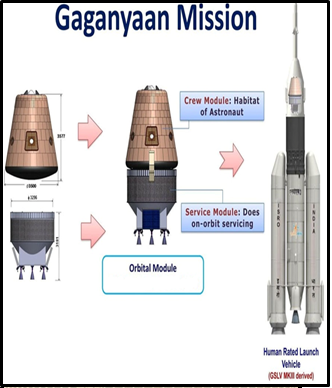ISRO TARGETS DECEMBER FOR FIRST GAGANYAAN MISSION
Why in the news?
ISRO aims to launch the first unmanned Gaganyaan mission by December 2024. Key hardware integration and testing are ongoing, with recent success in a Small Satellite Launch Vehicle flight.
source:theeconomictimes
About the Mission Timeline and Status:
- Launch Target: ISRO aims to launch the first Gaganyaan mission, named G1, by December 2024, as confirmed by ISRO Chairman S. Somanath.
- Current Progress: Rocket hardware for the human space program has arrived at the Satish Dhawan Space Centre. The integration of the Crew Module is underway at the Vikram Sarabhai Space Centre in Trivandrum.
- Components: The rocket stages, including the $200 stage and the Ll, C32 stage, are at the Satish Dhawan Space Centre. Crew Module integration and Crew Escape hardware preparation are in progress.
Developmental Flights and Achievements:
- Recent Success: ISRO recently completed the third and final developmental flight of the Small Satellite Launch Vehicle (SSLV), which successfully placed the Earth Observation Satellite into orbit.
- Testing and Integration: Full wiring and testing of the crew system are scheduled to be completed by November 2024. The entire system is expected to be assembled at the launch site by December.
Future Plans and Preparations:
- Mission Details: The Gaganyaan mission will start with an unmanned flight. Preparations are on track to meet the December launch target.
- Next Steps: Final integration and testing of all components will continue to ensure readiness for the mission’s launch.
| Key Points: Gaganyaan Mission
About Gaganyaan:
Payloads:
Launch Vehicle:
Training in Russia:
About the Small Satellite Launch Vehicle (SSLV): About:
Key Features:
Associated Article: |




